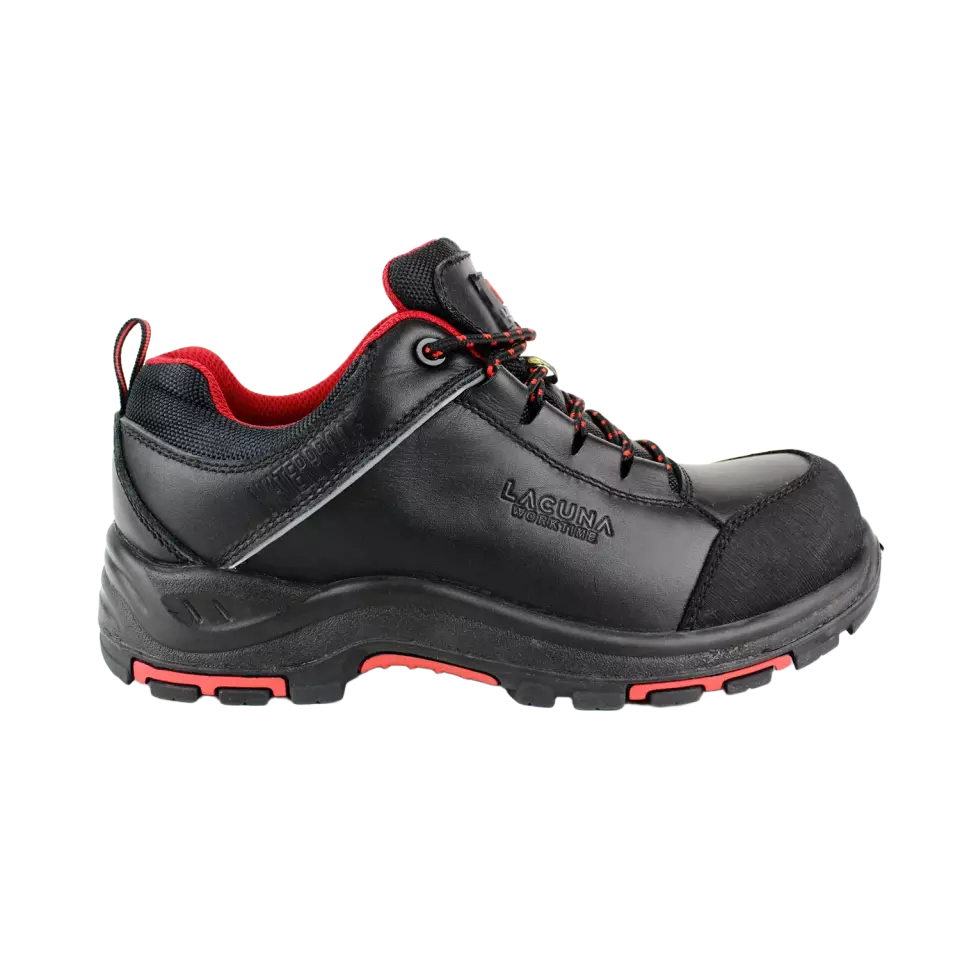
Features You'll Love

Outsole Properties · Shock Absorbing
EN 20345 · HI, HRO, CI
EN 61340-5-1 · Electrostatic Discharge Antistatic
Shock-absorbing soles provide cushioned comfort, reducing impact and foot fatigue for all-day wear.
Provides insulation to protect your feet from high heat from the ground. When tested at 150°C for 30 minutes, the temperature inside the footwear will not increase by more than 22°C, keeping your feet comfortable.
This footwear features a heat-resistant outsole that protects against brief contact with surfaces up to 300°C for one minute. It is ideal for work environments like road construction, welding, or in the metallurgical industry.
Provides insulation to keep feet warm in cold environments. The footwear is tested to protect against cold for 30 minutes at -17°C, ensuring the internal temperature does not drop by more than 10°C.
Guards the product’s sensitive electronics against damage from static electricity. This protection during manufacturing and handling prevents hidden component failure, ensuring your device works reliably and has a longer operational life.

EN 20345 · CR, WR
This footwear provides a cut-resistant upper, protecting you from sharp objects. It meets the general safety requirements for design, construction, materials, and performance, including a protective toe cap resistant to 200-joule impacts.
This footwear is resistant to water penetration for the entire shoe, not just the upper material. It keeps your feet dry from splashes and in damp conditions, making it ideal for working outdoors or in wet environments.
53,86 €
Choose size
Shipping fee is 7,95 € for orders under 80,00 €
Features You'll Love

Outsole Properties · Shock Absorbing
EN 20345 · HI, HRO, CI
EN 61340-5-1 · Electrostatic Discharge Antistatic
Shock-absorbing soles provide cushioned comfort, reducing impact and foot fatigue for all-day wear.
Provides insulation to protect your feet from high heat from the ground. When tested at 150°C for 30 minutes, the temperature inside the footwear will not increase by more than 22°C, keeping your feet comfortable.
This footwear features a heat-resistant outsole that protects against brief contact with surfaces up to 300°C for one minute. It is ideal for work environments like road construction, welding, or in the metallurgical industry.
Provides insulation to keep feet warm in cold environments. The footwear is tested to protect against cold for 30 minutes at -17°C, ensuring the internal temperature does not drop by more than 10°C.
Guards the product’s sensitive electronics against damage from static electricity. This protection during manufacturing and handling prevents hidden component failure, ensuring your device works reliably and has a longer operational life.

EN 20345 · CR, WR
This footwear provides a cut-resistant upper, protecting you from sharp objects. It meets the general safety requirements for design, construction, materials, and performance, including a protective toe cap resistant to 200-joule impacts.
This footwear is resistant to water penetration for the entire shoe, not just the upper material. It keeps your feet dry from splashes and in damp conditions, making it ideal for working outdoors or in wet environments.
Product description
Description: Low safety shoe
Upper: waterproof cow leather
Insole: anatomic, removable, memory foam based
Lining: water-resistant and breathable multilayer membrane in combination with 3D mesh
Sole: double density, PU/ NITRILE RUBBER, resistant to high temperatures up to 300°C
Technical features: O2, SRC, WR, HRO, CI, HI, ESD
Special features: metal free
Standard: EN ISO 20347: 2012, EN 61340-5-1: 2016 ESD
Avaibile sizes: 36-48
Barcode: 3856024208017
Unite of measure: pair
Packaging/minimum order quantity: 1
Full box quantity: 10